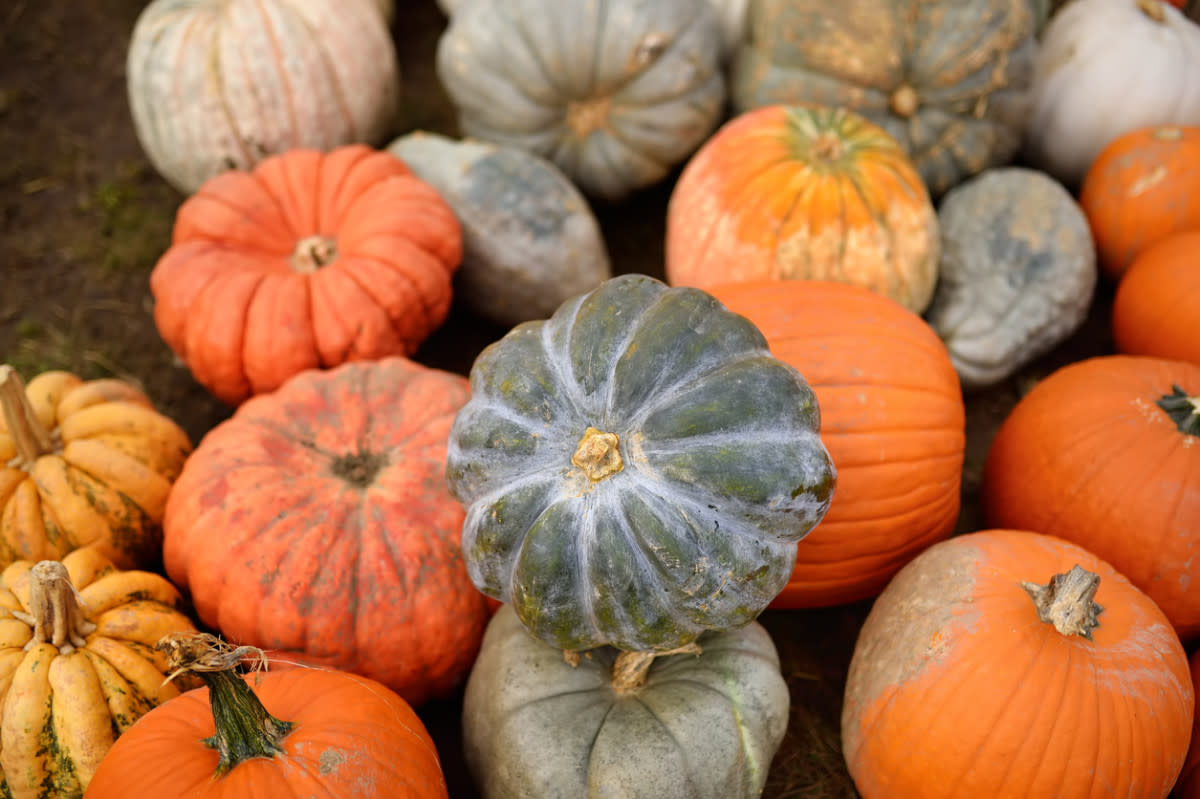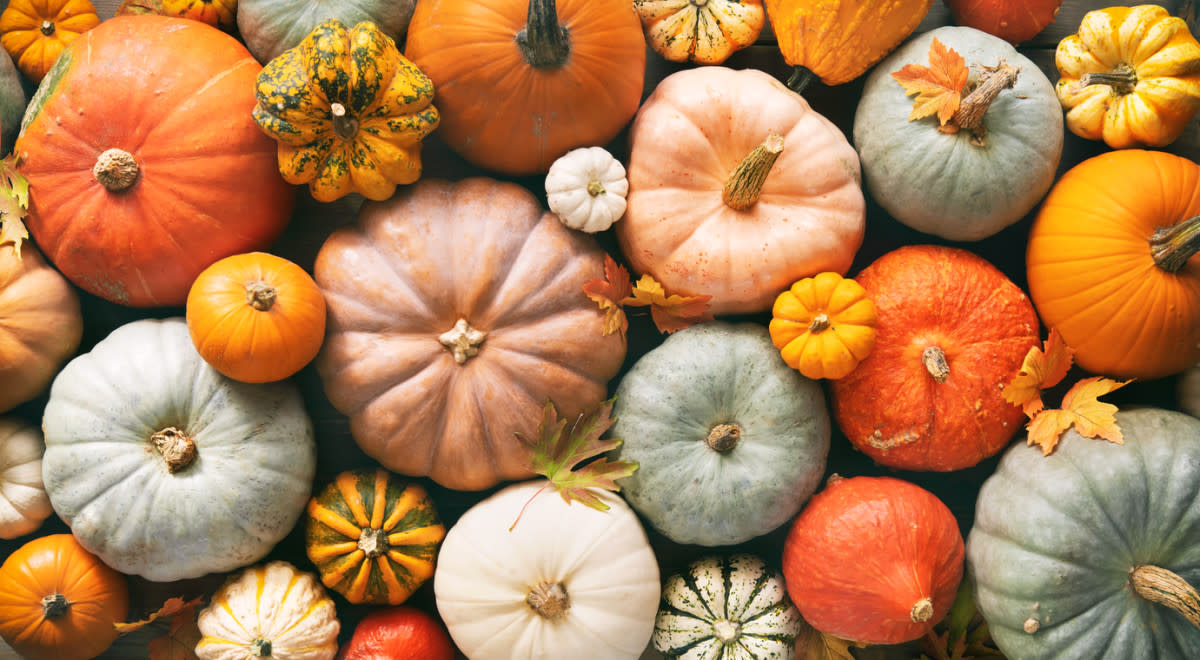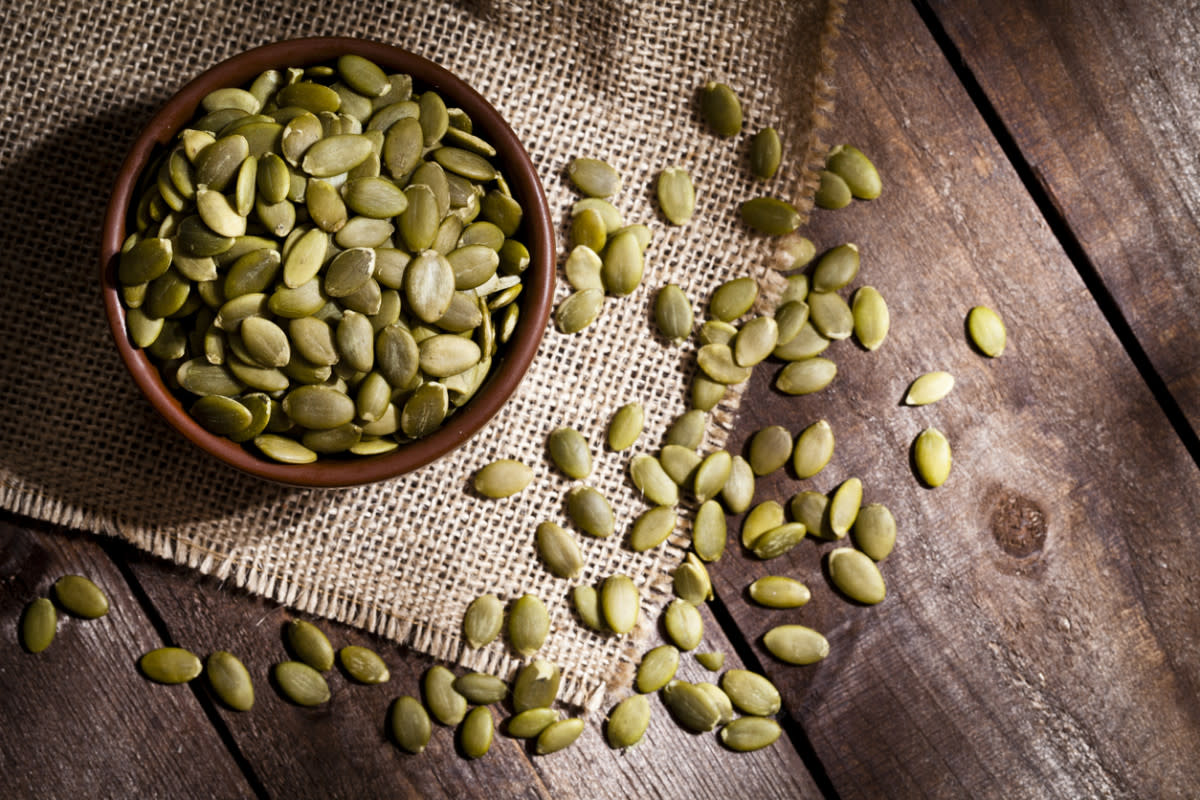Once and for All: Is a Pumpkin a Fruit Or a Vegetable?

It’s fall y’all and that means pumpkins are everywhere. From PSLs and pumpkin pie, to doorsteps bedecked with multi-hued gourds, you can’t travel far without seeing these large orange creations. Autumn just wouldn’t be the same without them. But what exactly are pumpkins? And is a pumpkin a fruit or a vegetable? Allow us to delve deeper into everyone's favorite fall ingredient.
What does the name pumpkin come from?
The word “pumpkin” comes from the Greek word “peopon,” which translates to “large melon,” says Lori Shemek, PhD, CNC, a nutrition and weight loss expert and author. From there, the word evolved into “pompon” in French and “pumpion” in English. But it was writer Charles Perrault who first used the word in his classic fairytale Cinderella to describe the magical melon from which Cinderella’s carriage was created.
Are pumpkins good for you?

iStock
Pumpkins are loaded with so many impressive nutrients that they’re labeled as a superfood. “Pumpkins have a lot of amazing health benefits that people probably aren’t aware of,” says Kenneth Bower, Director of Merchandising for Produce, Baldor Specialty Foods. A pumpkin is about 90% water, which can help keep you hydrated and filled. Since pumpkins boast nearly 3 grams of fiber, you’ll feel fuller longer, potentially promoting weight loss. “So, no need to feel guilty about that extra slice of pumpkin pie!” he says.
You get 245% of your daily recommended intake of vitamin A (which protects your eyesight), 19% of vitamin C (which promotes healthy skin and immunity), 11% of copper (which supports the immune system) and 16% of potassium (necessary for normal cell function). It’s also high in antioxidants and low in calories. “The antioxidants are particularly important as they help reduce the risk of chronic diseases such as cancer,” says Dr. Shemek. “These antioxidants can neutralize free radicals, stopping them from damaging your cells.”
And don’t forget about pumpkin seeds. They boast iron, zinc, magnesium, vitamin B2 and vitamin K. Roast them with minimal seasonings. Eat them solo as a snack or add them to salads or smoothie bowls, says Jenna Appel, RD, LDN, CDCES, a Boca Raton, Florida, registered dietitian and certified diabetes care and education specialist whose company, Appel Nutrition Inc., offers individualized nutrition and wellness counseling.
A pumpkin is a versatile piece of produce thanks to its earthy and slightly sweet flavor. Stuff it into some ravioli. Whip it into a soup. Enjoy it in a latte.
Related: 17 Easy Canned Pumpkin Recipes
Is a pumpkin a fruit or a vegetable?
Something with so many uses must be a vegetable, right?
You may think pumpkin is a vegetable. Classic pumpkin varieties aren’t naturally sweet like a fruit. They’re savory, like a vegetable. And you don’t bite into it and eat it raw like an apple or toss it into a fruit salad. “Pumpkins have to be cooked and can’t be eaten out of hand,” says Bower. You have to cook pumpkin to enjoy it in pies, soups, ravioli, stews and more.
That’s why you may be surprised to learn that your favorite fall vegetable isn’t a vegetable at all. It’s actually a fruit. “We often think of fruit as being sweet and vegetables being savorier,” says Appel. “When it comes to fruits like pumpkin, they’re not naturally sweet. So, they often get mistaken for a vegetable.”
Ponder that one for a bit.
Why is a pumpkin a fruit?

iStock
Blame it on science for the fact that pumpkin is classified as a fruit. According to the Produce for Better Health Foundation, a pumpkin is a fruit because it comes from the seed-bearing part of flowering plants. All you need to do is carve a pumpkin to know that it’s brimming with seeds. “Many people are surprised to find out that pumpkin is a fruit,” says Amy Gorin, MS, RDN, an inclusive plant-based dietitian in Stamford, Connecticut, and owner of Plant Based with Amy. “From a botanical point of view, it’s classified as such because a pumpkin is a product of the seed-bearing structure of flowering plants.”
A pumpkin comes from a flowering plant just like pineapples, apples and pears. All fruits come from a flower and contain seeds. “By definition, a fruit is the fleshy or dry ripened ovary of a flowering plant, enclosing the seed or seeds,” says Appel. “Thus, by definition, pumpkin is technically fruit.”
True, your basic Halloween pumpkin isn’t sweet like fruit. However, you’ll find about 30 varieties of pumpkin ranging from sweet to not so sweet. They come in various colors including orange, red, yellow and green, says Dr. Shemek. Sizes range from small to huge, with some even clocking in at over 500 pounds.
For cooking and baking, Appel suggests using a sugar pumpkin, which is also called a pie or sweet pumpkin. “They are small and round in shape and sweeter in taste,” Apple says. Find them in the produce department at your regular grocery store or at local farmers market, she adds.
Cinderella, cheese, Blue Jarrahdale or Blue doll are also great varieties for cooking, says Bower. The small stature makes the Touch of Autumn variety ideal for soup bowls. Avoid jack-o-lantern varieties for cooking, he says. “They can be a little bland, hard and stringy,” he says.
Related: Patch You Later! 55 Pumpkin Puns
So what is a vegetable?
On the flip side, vegetables are the parts of plants that are edible and don’t have seeds. That’s why lettuce (the leaves), onions (bulbs), potatoes (tubers), asparagus (stems) and carrots (roots) are all vegetables.
What kind of fruit is a pumpkin?

iStock
Let’s have your mind blown even more. Fruits have seeds and pumpkins contain a ton of those in their pulp. Pumpkins are considered berries, since a berry is a fleshy, pulpy and edible fruit that may have seeds. A berry is defined as a simple fleshy fruit that usually has many seeds, says Appel. That’s why a pumpkin would be classified as a berry. Grapes, blueberries and tomatoes are all true berries, says Dr. Shemek.
Related: The Meaning Behind 13 Different Halloween Pumpkin Colors—Decoded
What other foods that we think are vegetables are fruits?
Many foods that you likely think are veggies are really fruits since they come from a flower. Surprising examples of fruits are eggplants, avocados, tomatoes, corn, zucchini, okra, string beans, peppers and cucumbers. And as you now know, pumpkins.
Fun fact: “Every single part of a pumpkin is edible: the skin, leaves, flowers, pulp, seeds—even the stems,” says Dr. Shemek.
Whether it’s a fruit or a vegetable, you can never go wrong by eating a pumpkin—thank GOURD!






